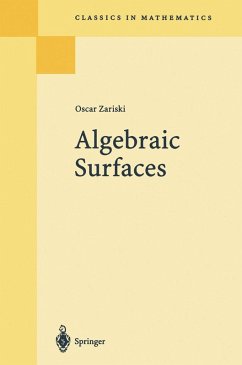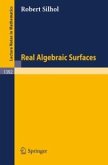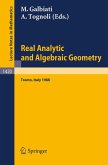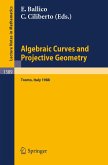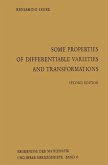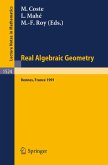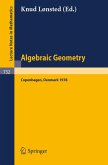From the reviews: "The author's book [...] saw its first edition in 1935. [...] Now as before, the original text of the book is an excellent source for an interested reader to study the methods of classical algebraic geometry, and to find the great old results. [...] a timelessly beautiful pearl in the cultural heritage of mathematics as a whole." Zentralblatt MATH
Dieser Download kann aus rechtlichen Gründen nur mit Rechnungsadresse in A, B, BG, CY, CZ, D, DK, EW, E, FIN, F, GR, HR, H, IRL, I, LT, L, LR, M, NL, PL, P, R, S, SLO, SK ausgeliefert werden.
"The author's book 'Algebraic surfaces' saw its first edition in 1935. By that time, the Italian school of algebraic geometers had brought the theory of algebraic surfaces, mainly with regard to its purely geometric aspects, to a remarkable stage of maturity. On the other hand, the topological and complex-analytic aspects had become a substantial part of the theory, essentially due to S. Lefschetz's contributions in the 1920s. However, for both directions, a solid base was still missing, and the new framework of abstract algebra was just at its beginning of being applied to algebraic geometry. The author's book was then a milestone in the history of the theory of algebraic surfaces, and even so in algebraic geometry as a whole. Namely, the author brought together the techniques of topology, analysis and classical algebraic geometry, in a coherent and rigorous way, thereby providing a solid foundation as well as a complete account of algebraic surface theory.
Now as before, theoriginal text of the book is an excellent source for an interested reader to study the methods of classical algebraic geometry, and to find the great old results, stated here without requiring the knowledge of the modern, abstract (sheaf- and cohomology-theoretic) machinery of contemporary algebraic geometry. -- The second edition of the book under review appeared in 1971 enriched by updating appendices -- one for each chapter --, which were written by S.S. Abhyankar, J. Lipman, and D. Mumford. These ten appendices gave outlines of the developments of algebraic surface theory during the period from 1935 to 1970, connecting -- in this way -- Zariski's original classic text to the methods and results of abstract modern algebraic geometry.
Today, there is a vast literature on algebraic surface theory from the modern point of view, ... , but the classic text under review is still highly recommendable for reading, a linking piece between classical and modern algebraic geometry, anda timelessly beautiful pearl in the cultural heritage of mathematics as a whole. The present edition is an unchanged reprint of the second edition from 1971."
Zentralblatt MATH, 845 `
Now as before, theoriginal text of the book is an excellent source for an interested reader to study the methods of classical algebraic geometry, and to find the great old results, stated here without requiring the knowledge of the modern, abstract (sheaf- and cohomology-theoretic) machinery of contemporary algebraic geometry. -- The second edition of the book under review appeared in 1971 enriched by updating appendices -- one for each chapter --, which were written by S.S. Abhyankar, J. Lipman, and D. Mumford. These ten appendices gave outlines of the developments of algebraic surface theory during the period from 1935 to 1970, connecting -- in this way -- Zariski's original classic text to the methods and results of abstract modern algebraic geometry.
Today, there is a vast literature on algebraic surface theory from the modern point of view, ... , but the classic text under review is still highly recommendable for reading, a linking piece between classical and modern algebraic geometry, anda timelessly beautiful pearl in the cultural heritage of mathematics as a whole. The present edition is an unchanged reprint of the second edition from 1971."
Zentralblatt MATH, 845 `

